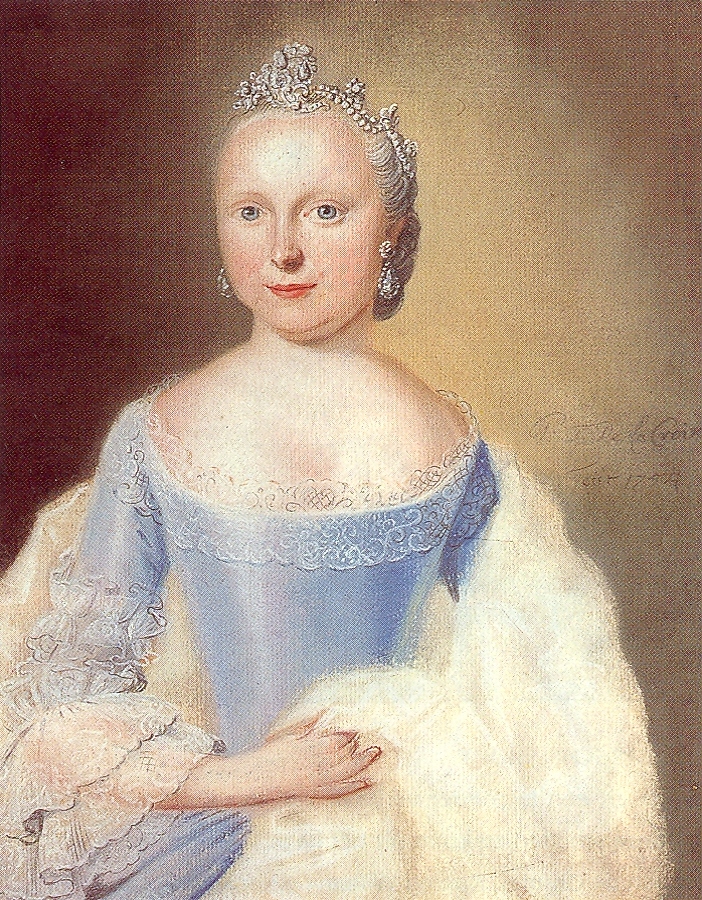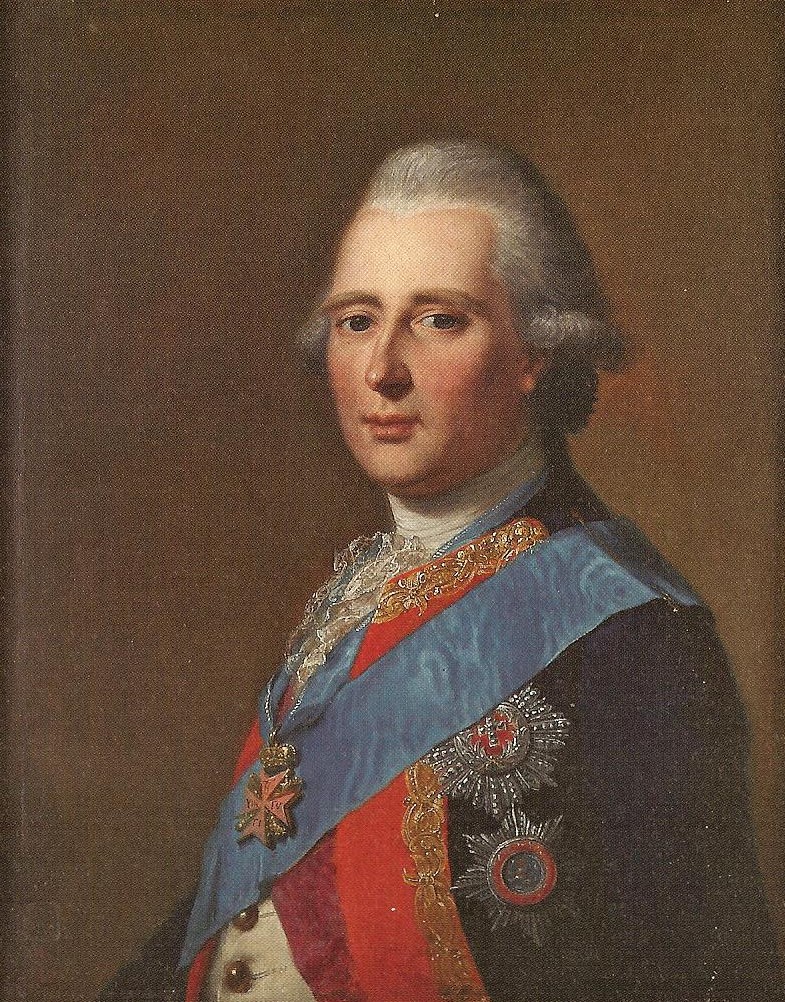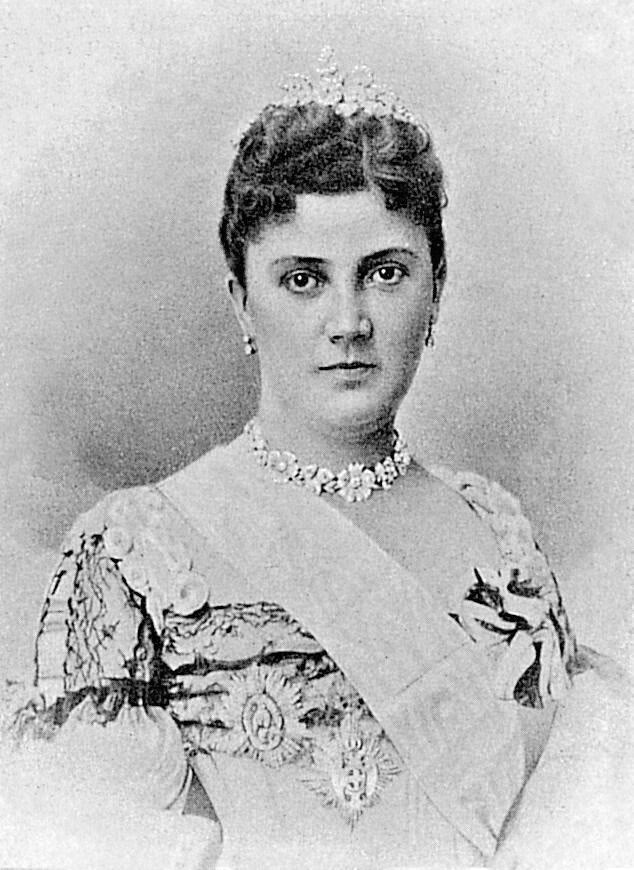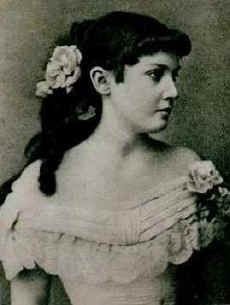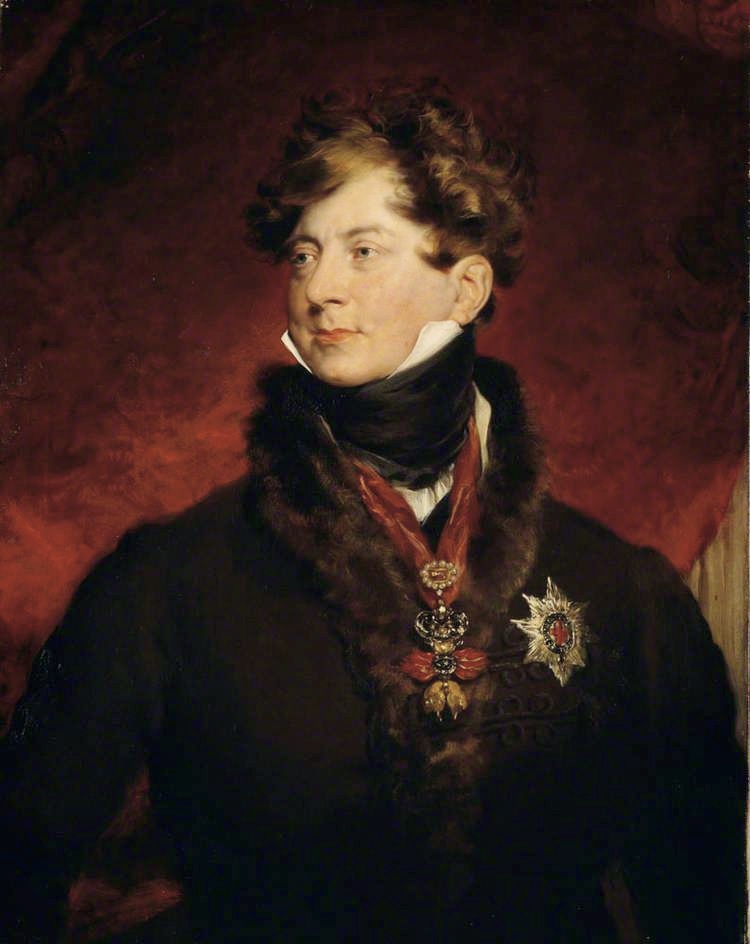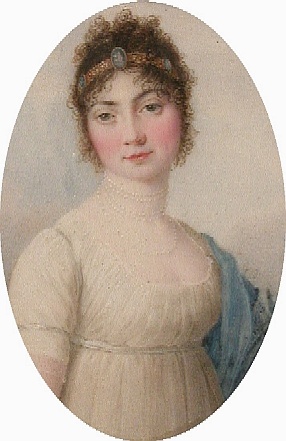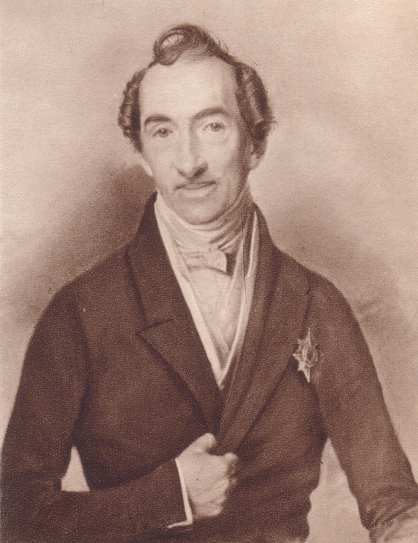by Susan Flantzer
© Unofficial Royalty 2019
King George I of Great Britain (1660 – 1727)

(All photos credits – Wikipedia unless otherwise noted)
King George I of Great Britain was born His Highness Duke Georg Ludwig of Brunswick-Lüneburg on May 28, 1660, at the Leineschloss (Leine Palace) in Hanover, now in Lower Saxony, Germany. He was the eldest of the seven children of Ernst August, Elector of Hanover, Duke of Brunswick-Lüneburg and Princess Sophia of the Palatinate, usually referred to as Electress Sophia of Hanover. George I’s paternal grandparents were Georg, Duke of Brunswick-Lüneburg and Anna Eleonore of Hesse-Darmstadt. His maternal grandparents were Friedrich V, Elector Palatinate of the Rhine and Elizabeth Stuart. It is through his maternal grandmother that his destiny drastically changed.
George I’s maternal grandmother Elizabeth Stuart was the second child and eldest daughter of King James VI of Scotland/King James I of England. The House of Stuart occupied the British throne but the Stuarts failed to produce a legitimate Protestant heir. George I’s mother Sophia, Electress of Hanover was the closest Protestant heir and was named the heiress presumptive to the British throne. However, Sophia of Hanover died two months before Queen Anne of Great Britain died and her son George I succeeded to the British throne upon the death of Queen Anne.
Before George I became King of Great Britain and while he was still living in Hanover, he married his paternal first cousin Sophia Dorothea of Brunswick-Lüneburg-Celle, known as Sophia Dorothea of Celle. The couple had two children, the eventual King George II of Great Britain and Sophia Dorothea of Hanover who married King Friedrich Wilhelm I of Prussia. Both George I and his wife Sophia Dorothea committed adultery and their marriage was dissolved. Sophia Dorothea was declared to be the guilty party and so she was confined in the Castle of Ahlden in Celle, now in Germany, for the rest of her life, 32 years. At the time Sophia Dorothea’s son was eleven-years-old and her daughter was eight-years-old. They never saw their mother again.
King George I shared his 33 first cousins with his only sibling Sophia Dorothea of Hanover, Queen of Prussia. He shared his paternal first cousins with his first cousin and wife Sophia Dorothea of Celle.
********************
Paternal Aunts and Uncles: Children of Georg, Duke of Brunswick-Lüneburg and Anna Eleonore of Hesse-Darmstadt
- Magdalene of Brunswick-Lüneburg (born and died 1620)
- Christian Ludwig, Duke of Brunswick-Lüneburg (1622 – 1665), married Sophia Dorothea of Schleswig-Holstein-Sonderburg-Glücksburg, no children
- Georg Wilhelm, Duke of Brunswick-Lüneburg (1624 – 1705), married Eleonore d’Esmier d’Olbreuse, had one daughter, George I’s wife Sophia Dorothea
- Johann Friedrich, Duke of Brunswick-Lüneburg (1625 – 1679), married Benedicta Henrietta of the Palatinate who was a first cousin of King George I, had four daughters
- Sophie Amalie of Brunswick-Lüneburg (1628 – 1685), married King Frederik III of Denmark, had three sons and five daughters
- Dorothea Magdalene of Brunswick-Lüneburg (1629 – 1630), died in childhood
- Anna Marie Eleonore of Brunswick-Lüneburg (1630 – 1636), died in childhood
********************
Maternal Aunts and Uncles: Children of Friedrich V, Elector Palatinate of the Rhine and Elizabeth Stuart, Electress Palatinate
- Heinrich Friedrich, Hereditary Prince of the Palatinate (1614 – 1629), unmarried, drowned
- Karl I Ludwig, Elector Palatinate (1617 – 1680), married (1) Charlotte of Hesse-Kassel, had two sons and one daughter (2) morganatically, Marie Luise von Degenfeld, had eight sons and five daughters; (3) morganatically, Elisabeth Hollander von Bernau, had one son
- Elisabeth of the Palatinate (1618 – 1680), unmarried, Princess-Abbess of Herford Abbey
- Rupert, Count Palatinate of the Rhine (1619 – 1682), unmarried
- Maurice of the Palatinate (1620 – 1652), unmarried, drowned when his ship sunk in a hurricane
- Louise Hollandine of the Palatinate (1622 – 1709), unmarried, converted to Roman Catholicism, nun and then abbess at the Cistercian Maubuisson Abbey
- Louis (born and died 1624)
- Edward, Count Palatinate of Simmern (1625 – 1663), converted to Roman Catholicism, married Anna Gonzaga, had three daughters
- Henriette Marie of the Palatinate (1626 – 1651), married Sigismund Rákóczi, no issue
- Johann Philip Friedrich of the Palatinate (1627 – 1650), unmarried, killed in battle
- Charlotte of the Palatinate (1628 – 1631), died in childhood
- Gustavus Adolphus of the Palatinate (1632 – 1641), died of epilepsy in childhood
********************
PATERNAL FIRST COUSINS
Paternal First Cousins: Child of Georg Wilhelm, Duke of Brunswick-Lüneburg and Eleonore d’Esmier d’Olbreuse

Sophia Dorothea of Celle, Electoral Princess of Hanover (1666 – 1726)
George I’s first cousin but also his wife, Sophia Dorothea of Celle was born on September 15, 1666, in Celle, now in Germany, the only child of Georg Wilhelm, Duke of Brunswick-Lüneburg and his mistress Éléonore d’Esmier d’Olbreuse. Sophia Dorothea was legitimized by Holy Roman Emperor Leopold I who granted her mother Éléonore the titles Gräfin (Countess) von Harburg and Wilhelmsburg. Éléonore and Georg Wilhelm later married morganatically. At the age of 16, in a marriage arranged by the bride and groom’s fathers (who were brothers), Sophia Dorothea was married to her first cousin, 22-year-old Georg Ludwig, Hereditary Prince of Brunswick-Lüneburg, the future King George I of Great Britain, had one son and one daughter, the future King George II of Great Britain and Sophia Dorothea, the future Queen Consort of Prussia.
The marriage was happy at first but then both George and Sophia Dorothea had affairs. Sophia Dorothea’s lover disappeared and was never seen again. It was widely believed that George ordered his death. A tribunal of judges and Lutheran Church officials declared the marriage of George and Sophia Dorothea dissolved on the grounds of Sophia Dorothea’s desertion. Because she was considered the guilty party, Sophia Dorothea was not allowed to remarry, would never again see her children, and would be kept as a prisoner at the Castle of Ahlden for the remainder of her life. Although Sophia Dorothea spent 32 years in captivity, she received an income that allowed her to live in the style of a princess and she was able to go for drives in her coach with an escort. When Sophia Dorothea died, her former husband, now King George I of Great Britain, would not allow mourning at the British court and was furious when he learned that his daughter had ordered court mourning in Prussia.
********************
Paternal First Cousins: Children of Johann Friedrich, Duke of Brunswick-Lüneburg and Benedicta Henrietta of the Palatinate
Anna Sophie of Brunswick-Lüneburg (1670 – 1672), died in childhood
********************

Charlotte Felicitas of Brunswick-Lüneburg, Duchess of Modena (1671 – 1710)
Charlotte married Rinaldo d’Este who had been a Cardinal of the Roman Catholic Church. He left the church to succeed his nephew Francesco II as Duke of Modena. Charlotte and Rinaldo had three daughters and three sons. Charlotte died in childbirth delivering a fourth daughter who also died.
********************
Henriette Marie of Brunswick-Lüneburg (1672 – 1757), unmarried
********************

Wilhelmina Amalia of Brunswick-Lüneburg, Holy Roman Empress, Queen of Hungary, Croatia, and Bohemia (1673 – 1742)
Although she was born into a Lutheran family, Wilhelmina received a Roman Catholic education from her great-aunt Louise Hollandine of the Palatinate who had converted to Roman Catholicism and became a nun and abbess at the Maubuisson Abbey in France. Wilhelmina was sought as a bride for the future Joseph I, Holy Roman Emperor, the heir of Leopold I, Holy Roman Emperor, King of Hungary, Croatia, and Bohemia. The couple married and had two daughters and one son, who died before his first birthday. While they were trying to produce a new heir, Joseph gave Wilhelmine a sexually transmittable disease, probably syphilis, which made her unable to have any more children. Joseph died at the age of 32 during a smallpox epidemic. Despite suffering from a sexually transmitted disease, Wilhelmina outlived her husband by 31 years.
********************
Paternal First Cousins: Children of Sophie Amalie of Brunswick-Lüneburg and King Frederik III of Denmark

King Christian V of Denmark (1646 – 1699)
As King of Denmark, Christian V tried unsuccessfully to regain territory that had been annexed by Sweden during his father’s reign. He was more successful in establishing colonies in Africa and the Caribbean as part of the Danish triangle trade. One of the Danish colonies in the Caribbean was the Virgin Islands which were held by Denmark until 1917 when Denmark and the United States ratified a treaty in which Denmark sold the Danish Virgin Islands to the United States for $25 million in gold. In 1691, the capital of the Danish Virgin Islands on the island of St. Thomas was renamed to Charlotte Amalie after Charlotte Amalie of Hesse-Kassel, wife of Christian V. Today, Charlotte Amalie remains the capital of the United States territory of the Virgin Islands. Christian V and his wife Charlotte Amalie of Hesse-Kassel, daughter of Wilhelm VI, Landgrave of Hesse-Kassel and Hedwig Sophia of Brandenburg, had five sons and two daughters including King Frederik IV of Denmark.
********************
Anna Sophia of Denmark, Electress of Saxony (1647 – 1717)
Anna Sophia was very well educated and spoke six languages. She married Johann Georg III, Elector of Saxony. They had two sons: Johann Georg IV who succeeded his father as Elector of Saxony and Friedrich August I who succeeded his brother as Elector of Saxony and later became King of Poland and Grand Duke of Lithuania.
********************
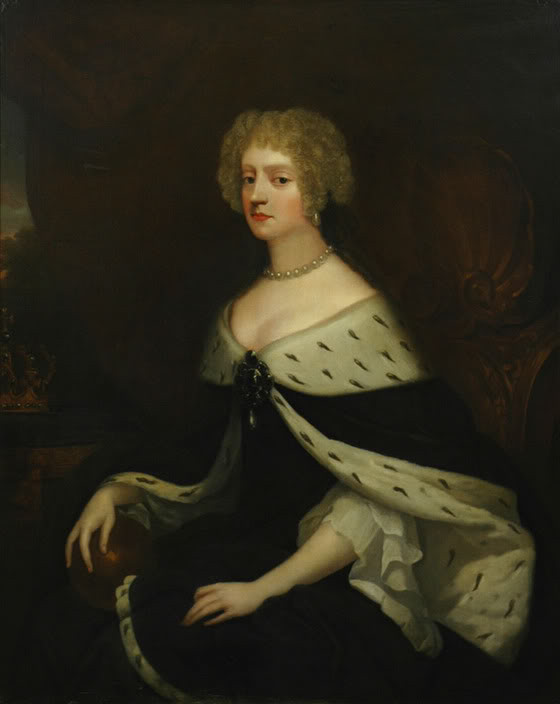
Frederika Amalia of Denmark, Duchess of Holstein-Gottorp (1649 – 1704)
Frederika Amalia married Christian Albrecht, Duke of Holstein-Gottorp and had two sons and two daughters. Through her son Christian August of Holstein-Gottorp, Prince of Eutin she was the great-grandmother of Sophie of Anhalt-Zerbst, better known as Catherine II (the Great), Empress of All Russia and the maternal grandmother of King Adolf Frederick of Sweden. Through her son Friedrich IV, Duke of Holstein-Gottorp, she was the great-grandmother of Peter III, Emperor of All Russia, the ill-fated husband of Catherine II (the Great), Empress of All Russia.
********************

Wilhelmina Ernestina of Denmark, Electress of the Palatinate (1650 – 1706)
Wilhelmina Ernestina married Karl II, Elector of the Palatinate in a marriage arranged by their mutual aunt Sophia, Electress of Hanover. The marriage was very unhappy. Karl had been forced by his father to marry against his will and disliked the marriage from the beginning. The couple had no children. After she was widowed, Wilhelmina Ernestina lived with her sister Anna Sophia, Electress of Saxony.
********************
Frederik of Denmark (1651 – 1652), died in infancy
********************

George and his wife Queen Anne of the United Kingdom
George of Denmark, Duke of Cumberland (1653 – 1708)
Ironically, George of Denmark was the first cousin of King George I of Great Britain, the person who succeeded his wife Queen Anne of Great Britain on the British throne. Queen Anne’s unfortunate childbearing history was one of the reasons the House of Stuart was replaced by the House of Hanover. Anne became pregnant a few months after her marriage but she gave birth to a stillborn daughter. She had 17 pregnancies with only five children being born alive. Two died on the day of their birth, two died at less than two years old within six days of each from smallpox, and one died at age 11. Anne suffered from what was diagnosed as gout and had pain in her limbs, stomach, and head. Based upon these symptoms and her obstetrical history, Anne may have had systemic lupus erythematosus which causes an increased rate of fetal death.
********************

Ulrika Eleonora of Denmark, Queen of Sweden (1656 – 1693)
Ulrika Eleonora of Denmark married King Carl XI of Sweden in the hopes that the marriage would bring peace to their two countries which had recently been at war with each other. Ulrika Eleonora and Carl had two daughters and five sons including King Carl XII of Sweden, Queen Ulrika Eleonora of Sweden, and Hedwig Sophia, Duchess of Holstein-Gottorp who was the grandmother of Peter III, Emperor of All Russia. Weakened by giving birth to seven children in as many years, Ulrike Eleonora died at the age of 36.
********************
Dorothea of Denmark (1657 – 1658), died in infancy
********************
MATERNAL FIRST COUSINS
Maternal First Cousins: Children of Karl I Ludwig, Elector of the Palatinate and his first wife Charlotte of Hesse-Kassel

Karl II, Elector of the Palatinate (1651 – 1685)
Karl II married Wilhelmina Ernestina of Denmark, also George I’s first cousin, in a marriage arranged by their mutual aunt Sophia, Electress of Hanover. The marriage was very unhappy. Karl had been forced by his father to marry against his will and disliked the marriage from the beginning. The couple had no children. Karl’s reign as Elector of the Palatinate lasted only five years as he died at the age of 34.
********************

Elizabeth Charlotte of the Palatinate, Duchess of Orléans (1652 – 1722)
Known as Liselotte, she grew up in the court of her aunt Sophia, Electress of Hanover. Liselotte wanted to marry her second cousin Willem III, Prince of Orange, who would later become King of England. However, her family felt a better marriage for her would be to become the second wife of Philippe I, Duke of Orléans, the younger brother of King Louis XIV of France. The recently widowed Philippe had been married to his first cousin Henrietta of England, Liselotte’s father’s first cousin. Liselotte converted to Roman Catholicism and married Philippe. She acted as a mother to Philippe’s children by Henrietta and maintained correspondence with them throughout their lives. Despite Philippe having homosexual affairs, he had been intent on fulfilling his dynastic responsibility of having children with his first wife and also did so with Liselotte. Philippe and Liselotte had three children of their own. Through their daughter Élisabeth Charlotte d’Orléans, they are the paternal grandparents of Archduchess Maria Antonia of Austria, better known as Marie Antoinette, Queen of France.
********************
Friedrich (born and died 1653), died in infancy
********************
Maternal First Cousins: Children of Karl I Ludwig, Elector of the Palatinate and his morganatic second wife Marie Luise von Degenfeld
- Karl Ludwig of the Palatinate (1658 – 1688), killed in battle
- Caroline Elisabeth of the Palatinate, Duchess of Schomberg (1659 – 1696), married Meinhardt von Schomberg, 3rd Duke of Schomberg, had one son and three daughters
- Louise of the Palatinate (1661 – 1733)
- Ludwig of the Palatinate (born and died 1662)
- Amalia Elisabeth of the Palatinate (1663 – 1709)
- Georg Ludwig of the Palatinate (1664 – 1665), died in infancy
- Frederica of the Palatinate (1665 – 1674), died in childhood
- Friedrich Wilhelm of the Palatinate (1666 – 1667), died in infancy
- Karl Eduard of the Palatinate (1668 – 1690), killed in battle
- Sophie of the Palatinate (born and died 1669), died in infancy
- Karl Moritz of the Palatinate (1671 – 1702)
- Karl August of the Palatinate (1672 – 1691), killed in battle
- Karl Casimir of the Palatinate (1675 – 1691), killed in a duel
********************
Maternal First Cousins: Child of Karl I Ludwig, Elector of the Palatinate and his morganatic third wife Elisabeth Hollander von Bernau
Karl Ludwig of the Palatinate( 1681 – ?)
********************
Maternal First Cousins: Children of Edward, Count Palatinate of Simmern and Anna Gonzaga
Luise Marie of the Palatinate, Princess of Salm-Salm (1647 – 1679)
Luise Marie married Karl Theodor, Prince of Salm-Salm and had three daughters and one son.
********************
Anne Henriette of the Palatinate, Princess of Condé (1648 – 1723)

Anne Henriette’s father Edward, Count Palatinate of Simmern was the son of Elizabeth Stuart, eldest daughter of King James I of England. Edward converted to Roman Catholicism and his three children were raised as Catholics. The Bill of Rights 1689 barred Catholics from the thrones of England and Scotland and the Act of Settlement 1701 gave the thrones of England and Scotland to “the most excellent princess Sophia, electress and duchess-dowager of Hanover” and “the heirs of her body, being Protestant”. Sophia, Electress of Hanover was the aunt of Anne Henriette and her surviving sister Benedicta Henrietta and the younger sister of their deceased father. Therefore, the surviving children of Edward, Count Palatinate of Simmern and his other Catholic descendants were barred from the thrones of England and Scotland.
Anne Henriette married Henri Jules de Bourbon, Prince of Condé at the Palais du Louvre in Paris with King Louis XIV of France and the rest of the French royal family attending the wedding. The couple had six daughters and four sons.
********************

Benedicta Henrietta of the Palatinate, Duchess of Brunswick-Lüneburg (1652 – 1730)
Benedicta Henrietta married Johann Friedrich, Duke of Brunswick-Lüneburg. Johann Friedrich was 27 years older than Benedicta Henrietta and was the only member of his family to convert to Roman Catholicism. As reigning Duke of Brunswick-Lüneburg, he needed a male heir but he had four daughters with Benedicta Henrietta. Their four daughters are also first cousins of King George I of Great Britain through their father. When Johann Friedrich died without a male heir, his younger brother Ernst August became Duke of Brunswick-Lüneburg and Ernst August’s succeeded to the British throne as King George I. After her husband died, Benedicta Henrietta returned to her native France and lived with her sister Anne Henriette of the Palatinate, Princess of Condé.
********************
This article is the intellectual property of Unofficial Royalty and is NOT TO BE COPIED, EDITED, OR POSTED IN ANY FORM ON ANOTHER WEBSITE under any circumstances. It is permissible to use a link that directs to Unofficial Royalty.
Works Cited
- Lundy, D. (2019). Main Page. [online] Thepeerage.com. Available at: http://www.thepeerage.com/. (for genealogy information)
- Unofficial Royalty. (2019). Unofficial Royalty. [online] Available at: https://www.unofficialroyalty.com. (for biographical and genealogy information)
- Wikipedia. (2019). Main Page. [online] Available at: https://en.wikipedia.org/. (for biographical and genealogy information)







